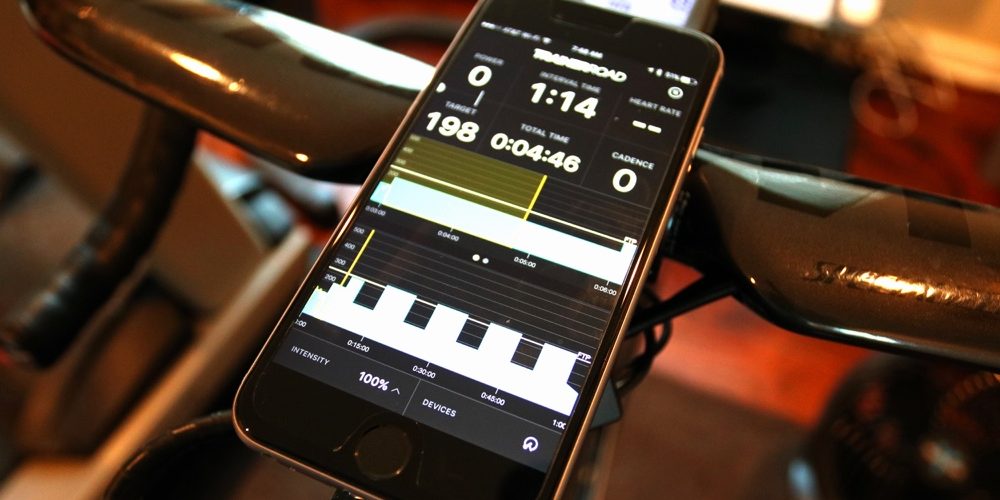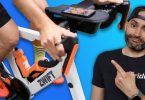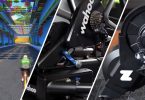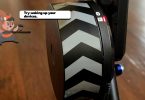One of the best features of smart trainers is their ability to provide power numbers. Manufacturers pride themselves on power accuracy. You will see their power accuracy claims printed in large bold font on the front of the box – if it’s a good number of course.
Smart bike trainer’s accuracy is without a doubt an important number to look for when purchasing a smart trainer. You will see it as a +/-x% number. I talk about it a lot in my reviews and usually, you will see a dedicated section for testing the manufacturer’s accuracy claim.

When deciding to purchase a trainer, is power accuracy something you need to worry about? To answer that question, there are two things we need to look at: The software you intend to use for training and whether you own or don’t own a powermeter, and of course, you intend to use power for training and you care about the accuracy – which I think you do since you are reading this post.
POWERMETER vs YOUR SMART TRAINER
If you own a powermeter, you probably want your trainer power number to match or come very close to your powermeter readings. But that’s not entirely necessary.
This really depends on the software you use. If you use Zwift or TrainerRoad for example, then you can just use your powermeter as the source–and you should do that. It’s what you use when you ride outside and you should use the same the same source for all your training. If you use ERG mode for structured training, both applications support powermatch–meaning they will use your powermeter as the source to reach your target power and control the trainer’s resistance accordingly. Basically, they will totally ignore what your trainer’s powermeter say. The power number you will see on the screen and record is coming from your powermeter, not the trainer.
However, if you use a different training application that doesn’t support power match – and most of them don’t, then you probably should worry about how accurate your trainer is.
Let’s assume you have an FTP of 300 watts, your structured workout says to do 2×20 minutes at 290 watts and you would like to use ERG mode. Let’s assume the trainer is off by 5%, which is usually the case with most good wheel-on trainers. Assuming the trainer is 5% higher, then you will be doing this workout at 305 watts. This workout is very hard to begin with, and you will probably fail the workout. If your trainer measure 5% lower, then you will be doing it at 275 watts and the workout will feel a lot easier and you might not be getting the full benefit from the workout.
This is also assuming the trainer is calibrated correctly. I have seen some trainers read +/-10% or even more when not calibrated correctly.
So if you like to train in ERG mode and the software you use doesn’t support powermatch, then you should invest in a trainer with an accurate powermeter.
NO POWERMETER
If you don’t own a powermeter and you have no idea what your FTP is, then the +/- number might not matter so much to you. What’s important is getting the same constant measurement everytime you use your smart trainer.
With indoor training, speed doesn’t matter. Don’t even bother looking at it and don’t mention your average indoor speed to other cyclists on your group rides. What matters when training indoors is your power. That’s the only repeatable metrics you will have and you want to be obsessed about. Notice how I said repeatable? You want to be able to trust the trainer to repeat these numbers every ride so you can have a reliable metric to measure your training effect.
As long as the trainer is off by 3% every ride, then you have good repeatable numbers. It might be +3% or -3% when compared to a power meter. But as long as it’s always off by 3% then you are good. You might not be happy when you decide to try a real power meter because you suddenly see lower numbers or higher number, but that doesn’t really matter. What’s important here is you have a good reliable measurement produced by your trainer that you can use to measure your training every time you jump on that bike.
VIRTUAL WORLD
If you plan on riding a lot on virtual courses such as Zwift, or simulating a course that you plan on racing, then accurate power becomes more important. In virtual riding, speed is calculated based on watts/kg and some applications might include additional physics to it such as equipment used, weather, road surface, etc. to calculate your speed. But the two main metrics you have control over is watts and your weight.
In Zwift, for example, you have the option to use your powermeter or trainer as the power source. It will also include your weight and additional in-game physics to propel your avatar. If you plan on racing and your trainer is broadcasting inaccurate numbers, you will end up falsely inflating your ego and pissing a lot of people off. In this case, an accurate trainer is something to consider if you don’t have a powermeter.









Always great articles and insight. My question is as follows. I have a stages power meter and I wanted to get the Kickr Snap trainer. Since I’m using my own power and power match do I still have to complete spin down etc, each time? If I don’t because of my own power meter then that seems like a great purchase to get kickr snap wheel on.
Thanks so much
Jared.